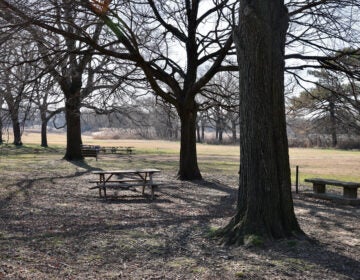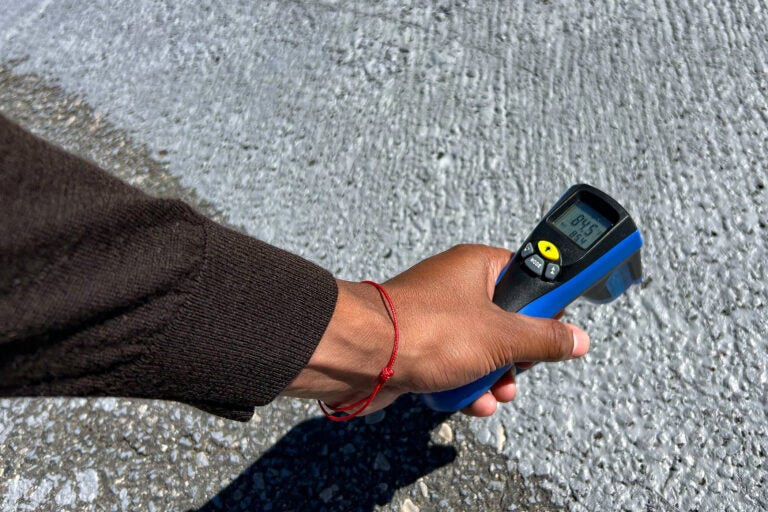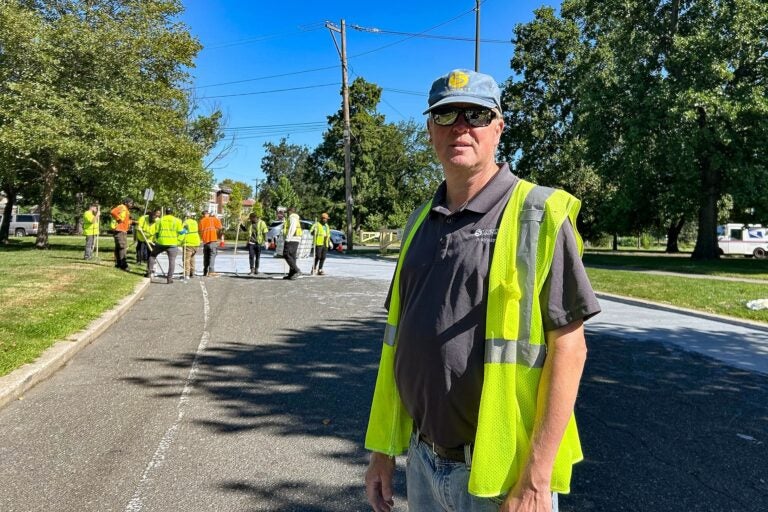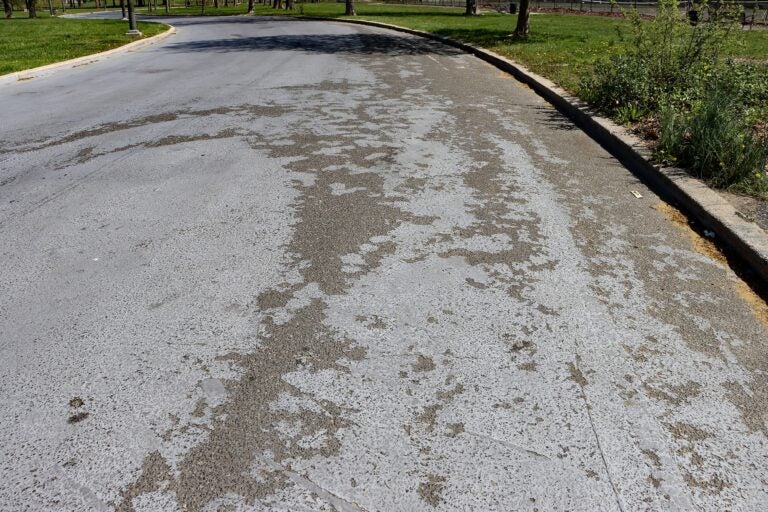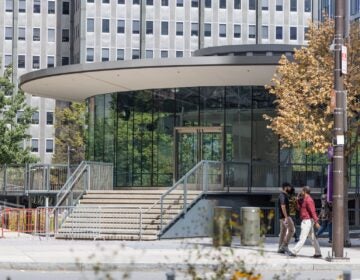Philadelphia tests out ‘cool pavement’ in Hunting Park to combat summer heat
The city finished installing a second “cool pavement” test patch this summer. So far, results are mixed.
Listen 4:31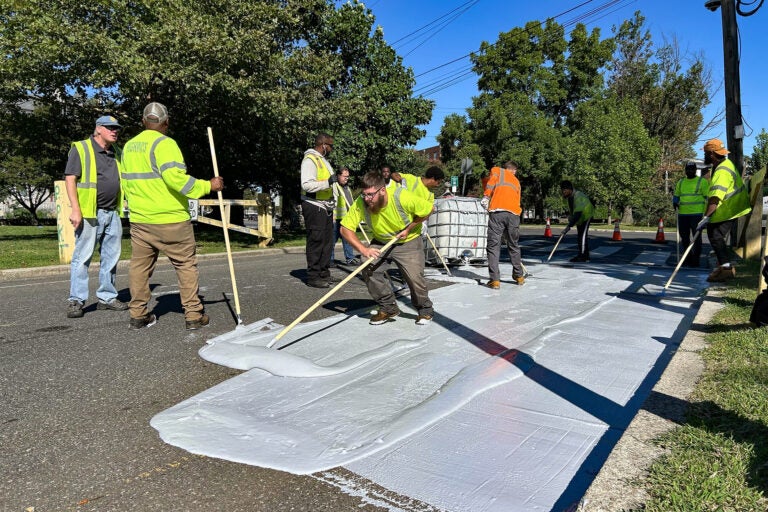
Streets Department employees spread CoolSeal reflective coating on a paved road near the Hunting Park Recreation Center. (Sophia Schmidt/WHYY)
This story is part of the WHYY News Climate Desk, bringing you news and solutions for our changing region.
From the Poconos to the Jersey Shore to the mouth of the Delaware Bay, what do you want to know about climate change? What would you like us to cover? Get in touch.
Philadelphia’s neighborhoods bake in the summer heat. Surface temperatures in parts of North, West and South Philadelphia can reach more than 20 degrees Fahrenheit hotter than in greener areas.
Part of the problem is concrete and asphalt pavement, which contributes to the urban heat island effect by absorbing the sun’s heat.
So the city’s Office of Sustainability is testing out a new alternative: reflective pavement.
Could ‘cool’ pavement combat the urban heat island effect?
As climate change drives more intense heat waves, “cool pavement” is being examined as a potential solution to help keep city streets cooler.
This is because conventional paved surfaces trap heat in cities, said Kamil Kaloush, a professor of pavement engineering at Arizona State University who has studied cool pavements.
“Pavements, typically, they cover a large surface area in urban cities,” Kaloush said. “Whether these are roads, highways, parking lots … they have a tendency to absorb heat during the day and re-emit this back to the atmosphere at nighttime.”
Cool pavements, on the other hand, are designed to reflect more of the sun’s energy, rather than absorbing it.
Researchers have estimated using models that, when applied over very large areas, reflective pavements could lower the ambient temperature by a small but significant amount — enough to have a meaningful impact on human health and safety, said Hashem Akbari, a professor of engineering at Concordia University in Montreal who has studied urban heat island mitigation.
Philly’s cool pavement pilot in Hunting Park
The city of Philadelphia is currently testing out a type of cool pavement coating called CoolSeal on two stretches of roadway near the Hunting Park Recreation Center.
“We just want to make residents feel cool and comfortable in their neighborhoods,” said Andrew Dodd, placed-based heat resilience program manager in the city’s Office of Sustainability. “What success looks like is just figuring out whether or not we can use this CoolSeal pavement in our toolbox as we expand our heat resilience efforts citywide.”

A team of students and researchers at the University of Pennsylvania, led by a soft matter materials lab called the Composto Research Group and the Thermal Architecture Lab, is monitoring the patches for their durability and their effect on temperature.
Philly’s pilot will be the first to evaluate the coating’s performance in a humid environment, said Russell Composto, a professor of engineering at Penn. His team will also evaluate how well the pavement stands up to the freeze-thaw cycle of a Mid-Atlantic winter.
The first section of pavement, installed last summer, used just one coat of the CoolSeal coating. Within months, the coating had worn off in places and cracked, according to members of Composto’s team.
The city installed a double coat of CoolSeal on its second test patch this summer.
The CoolSeal pavement costs around $0.60 to $0.80 per square foot, Dodd said. The city is spending a total of around $44,000 for the pilot project materials.
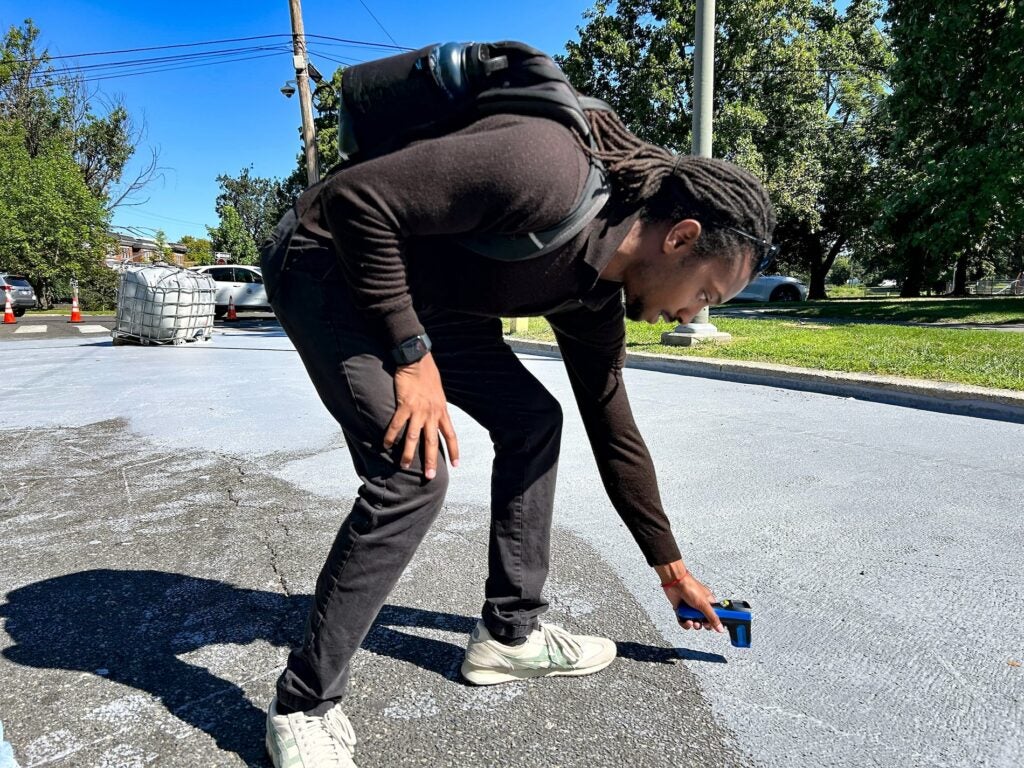
Research has found limited benefits of cool pavement
Cool pavement is already in use in places like Phoenix, Arizona, which coated over 140 miles of its roadways with CoolSeal.
Phoenix’s cool pavement pilot found that the CoolSeal coating lowered the roads’ surface temperature by up to 12 degrees.
But the coating was much less effective at cooling the air. At best, air temperatures in Phoenix were less than 1 degree Fahrenheit cooler over the cool pavement than over the conventional asphalt. Still, researchers who evaluated Phoenix’s pilot estimated that if applied throughout the city, the cool pavement’s “small but beneficial” effect on air temperature could add up, and save residents millions of dollars on air conditioning costs each year.
But Phoenix’s pilot also found a concerning result: The CoolSeal coating bounced heat up onto pedestrians. The pilot found that the temperature that would be experienced by humans standing over the reflective pavement was roughly 5 degrees Fahrenheit warmer than over conventional asphalt during the hottest part of the day.
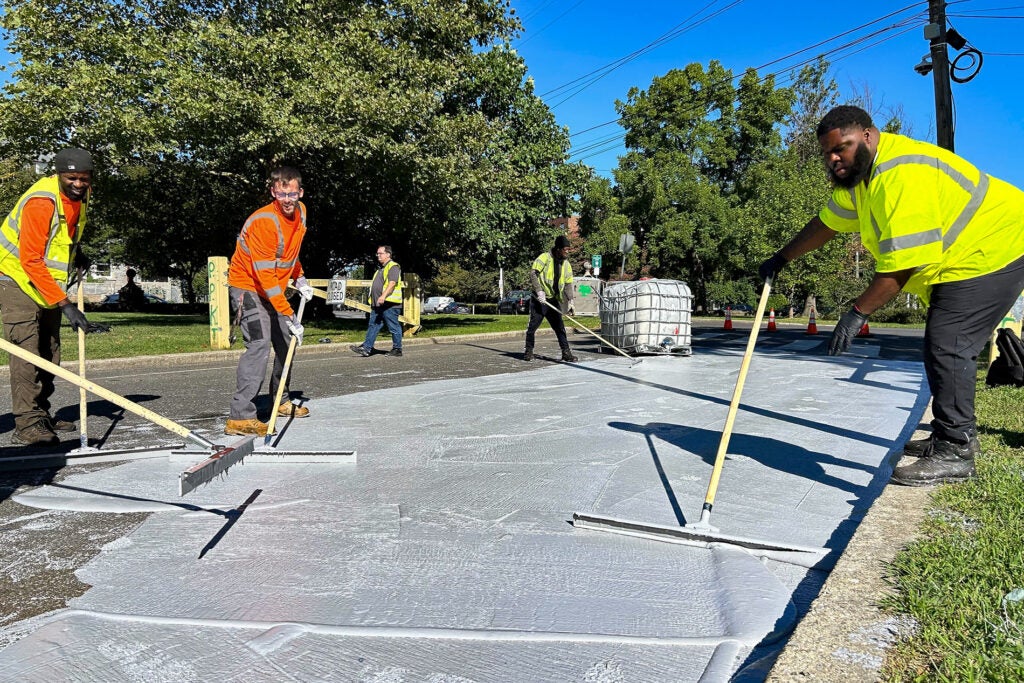
So far, results are mixed in Philly
The Philadelphia researchers are still collecting data and analyzing the results of the cool pavement pilot in Hunting Park. So far, they’ve found similarly mixed results.
The CoolSeal coating in Hunting Park appears to effectively lower the temperature of the road surface, but the Penn researchers have not found consistent evidence that it lowers the air temperature or would make a pedestrian feel cooler while walking above it.
“We didn’t see a consistently negative impact,” said Dorit Aviv, director of Penn’s Thermal Architecture Lab. “But we don’t see evidence of clear improvement for human comfort.”
Aviv said solutions that stop the sun’s energy from reaching the ground in the first place — for example, shading with trees or artificial canopies — may be more effective at cooling down city blocks.
In reality, cities may need to use a combination of strategies, Composto said.
“You mix and match the best approaches to mitigate urban heat,” he said.
The city also hopes to test another potential benefit of the cool pavement coating: whether it could extend the life of the asphalt beneath it by insulating the road from heat stress.
What’s next for Philly’s cool pavement pilot
The Penn researchers and students plan to continue monitoring the durability of the CoolSeal coating at least through the winter, Composto said.
City officials will begin evaluating the results in fall of 2026, Dodd said. If the pilot shows promise, the city could consider applying CoolSeal pavement more broadly. If not, city officials will pivot to exploring other potential solutions, such as cool roof coatings, he said.
“I just want to emphasize the fact that this is a pilot,” Dodd said. “Hopefully we get some really good results.”

Get daily updates from WHYY News!
WHYY is your source for fact-based, in-depth journalism and information. As a nonprofit organization, we rely on financial support from readers like you. Please give today.




